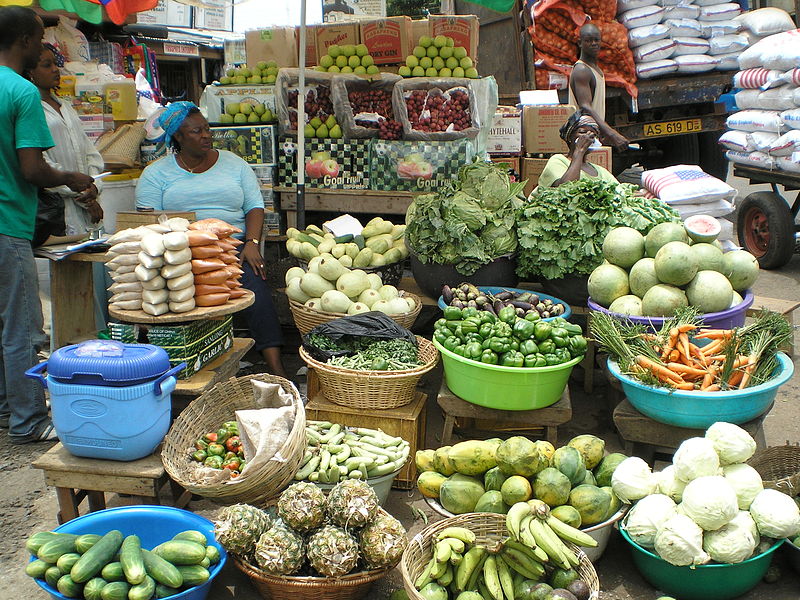
Centre for Climate Change and Food Security is a non-governmental organisation established in August, 2015 with the aim of recommending policies and practical solutions that can revolutionize farming, food production and the rural economy.
It is also aimed at providing climate-smart agricultural solutions through climatologists to improve food security among other.
Within a year of its existence, the centre has introduced some steps and findings which is a big breakthrough in the agriculture sector in Ghana.
With continuous flooding in some parts of the country and sometimes, severe drought, the centre is recommending the following to the policy makers, Ghana needs to institute the water harvesting system in some parts of the country to store water for crop cultivation.
Irrigation is the most evident solution to drought, but the cost involved makes it benefit some few Ghanaians. Findings revealed that, water harvesting is low cost alternative to irrigation.
In areas where severe drought normally occurs, water harvesting is a direct productive form of soil and water conservation. Reliable yields and production can be significantly improved with this method.
The spillage of Bagre dam won’t be a source of worry for Ghanaian if this method is implemented. Another Finding is that, water harvesting can increase crop production by 50 % all year round.
In Tanzania for instance, the University of Dar es Salaam has applied rainwater harvesting technology to supplement the piped water supply in some of the newly built staff housing.
In Botswana, the Ministry of Local Government, Land and Housing (MLGLH) has constructed thousands of roof catchment and tank systems at a number of primary schools, health clinics and government houses.
The situation is not different in other African countries. The Centre for Climate Change and Food Security believe that, Rainwater Harvesting system will help curb shortage of water and support farmers during the dry season and drought as well.
Food security analysts have also found out several issues that might trigger prices of food commodities in 2017.
For the past one year, many farmers have harvested less than what they invested. One farmer in the Brong Ahafo region lost thousand of cedis during the cultivation stages due to climate change.
They were mostly affected by bad weather during the year of cultivation. If this trend continues, most farmers will be compelled to increase food prices.
A clear example is the recent shortage of cassava in the Ghanaian market. Findings revealed that, the shortage was affected by two things;
Climate change and Continues reduction in the price of gari.
Most of the cassava farmers in the Brong Ahafo region where majority of the findings came from, were actually supplying to gari producers.
At a point, the price of gari went below GH3 and the farmers thought it was better for them to shift to another crop that was gaining market attention.
Most farmers went into maize farming hoping that, the trend will change soon. So the next harvesting season, the small available cassava in the system got finished with time.
When the price of gari shot up to about GH9 cedis, these same cassava farmers whose aim was to make profit gradually moved from the maize farming to the old cassava farms.
The farmers wanted to make profits as the price of gari went up. But the unfortunate incident happened and the shortage of cassava continued to hit the region. Climate change affects farmers with severe drought.
Over 350 million young people in Africa will be entering the labour force between now and 2035, the numbers in Ghana might fall below expectations.
Agriculture won’t be attractive to young people unless it helps them to earn good money.
The situation in Ghana is challenging. Apart from the fact that, farmlands are being sold out to estate developers, many of these farmers whose children were targeted to inherit their parents are leaving farming jobs to find white collar jobs in cities and abroad. Farmlands have been deserted after tertiary education.
A clear example is Zongo and Nante in Kintampo in the Brong Ahafo region where more than 50 percent of the youth have abandoned their farmlands to travel to Libya and other countries. A visit to these two communities tells the story.
There are many other farming communities across the country experiencing same. The fear that, Ghana might not be able to produce more for its citizen in the next ten years is becoming rear.
If all things being equal and the number of this active youth in farming continue dwindling, Ghana might not be able to produce for its growing population.
Projections are that, in ten years time, an ordinary Ghanaian on the street cannot buy foodstuff because there will be astronomical increase in prices of food.
In countries like Ghana, our agriculture that mostly depends on rain might produce 15% of the current crop yields by 2020.
In the next ten years, if climate change continues to affect rainfall pattern, between 75 and over 200 million people living in Africa will have severe challenges due to water. Farms are undisputedly the most important ecosystems for human welfare.
Rain fed agriculture provides nearly 60% of global food value on 72% of harvested land. Rainfall variability is an inherent challenge for farming in tropical and sub-tropical agricultural systems.
These areas also coincide with many rural smallholder (semi-)subsistence farming systems, with high incidence of poverty and limited opportunities to cope with ecosystem changes. Water for domestic supply and livestock is irregular through temporal water flows and lowering ground water in the landscape.
Climate change will affect rainfall and increase evaporation, which will put increasing pressures on our ecosystems services. At the same time, development by a growing population will affect our ecosystems as we increase our demands for services, including reliable and clean water.
Rainwater harvesting will continue to be an adaptation strategy for people living with high rainfall variability, both for domestic supply and to enhance crop, livestock and other forms of agriculture.
Farmer in Ashanti Region lose 17 tonnes of Fish in a year
Kweku Asante, a 58 year old fish farmer in the Ashanti region has lost about 17 tonnes of fish to flood since 2014 costing his farm close to Ghc 170, 000.
This is one of the many who have lost tons of fish through flood. The aquaculture centre in the Ashanti region has also gone through similar experience.
Lake Bosomtwe lose its glory of fishing expedition
Lake Bosomtwe, which used to produce tonnes of fish for the local people, is now losing its value as a fishing expedition site.
A total of 100 farmers we visited in the Northern, Upper East and Brong Ahafo Regions in one way or the other were affected by climate change, either by flood, bad weather and drought.
For the first time in the history of Ghana, vegetable farmers in Kulungungu who farm along the White Volta are digging deep to search for water.
There are a lot more of them going through same experience.
What is the Implication Here?
The level of production will reduce and farmers won’t be able to feed the growing population in the country.
Good quality food will not be realised and the prices of food will definitely go up.
The Way Forward
Looking at what Africa and for that matter Ghana is going through, the country can adapt to climate change. Rainwater harvesting is one of those steps that does not require billions of dollars, it requires international conventions first – it is a technology, a management approach, to provide water resources at the community levels to enhance crop, livestock and other forms of agriculture.
The Centre wants state institutions to institute measures to curb the situation of climate change.


























